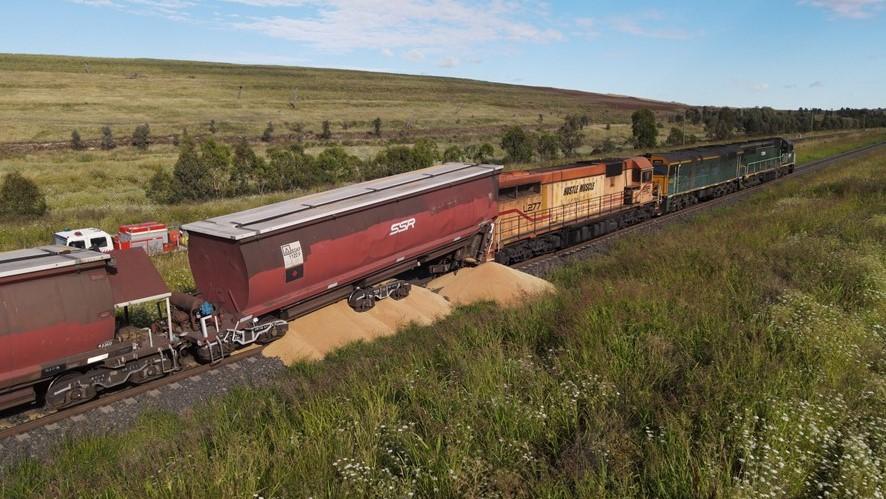
Rail transport operators and registered training organisations are urged to review and validate their rail safety worker competency assessments, in response to an investigation into a grain train collision near Tamworth, New South Wales.
On 6 January 2022, three banking locomotives were added to the rear of a loaded grain train at Werris Creek, to assist it up a steep uphill gradient later in its journey.
During transit, the banking locomotives separated from the train. Shortly afterwards, the train stopped, and the locomotives collided with the rear of the train, resulting in significant damage to the rear wagon and the front banking locomotive.
A transport safety investigation was conducted by the Office of Transport Safety Investigations (OTSI), which investigates rail accidents in New South Wales on behalf of the Australian Transport Safety Bureau.
The investigation found the train separation was highly likely due to the knuckle on the bottom operated coupler of the lead banking locomotive remaining unlocked after coupling.
Notably, it was found the train crew had not performed a ‘stretch test’ after attaching the banking locomotives.
“A stretch test would have identified that the knuckle on the bottom operated coupler of the lead banking locomotive had remained unlocked after coupling,” OTSI’s Acting Chief Investigator Jim Modrouvanos said.
“It was also found that while the train crew had been assessed as competent in shunting during both vocational education and training (VET) and enterprise-based assessments on several occasions, the supporting evidence collected was usually limited to a single check box that the task had been ‘performed correctly’.”
As a result of these findings, a Safety Advisory Notice has been issued to rail transport operators, and registered training organisations acting on their behalf, to review and validate their rail safety worker competency assessments.
“The competence of rail safety workers is critical to safe railway operations,” Mr Modrouvanos asserted.
“Relevant industry members should validate their competency assessments to ensure their assessment tools, processes and judgements are reliably meeting the principles and requirements of competency-based training and assessment.”
Additionally, OTSI’s investigation found after the separation event, the response taken by the banking locomotive’s driver in relation to the sudden loss of brake pipe pressure was consistent with their training and the operator, Southern Shorthaul Railroad’s emergency response procedures, despite being inappropriate for the situation.
“It was also found the operator’s risk assessments for this operation were mostly performed by members of the management team,” Mr Modrouvanos added.
“While the team had varying levels of operational experience, consultation with operational staff directly affected by the operation did not occur.
“During assessment of risk, consultation consisting of effective and meaningful engagement becomes critical in identifying novel risks which may not be immediately apparent,” he continued.
“Particular attention should be given to procedures utilised in past operational environments, to ensure their ongoing appropriateness in these unique operational circumstances.”
Southern Shorthaul Railroad has taken a range of safety actions since the accident, including providing train crew with reference materials related to coupler functionality, defining the process for a ‘stretch test’ after coupling, and contextualising emergency response procedures for banking operations.
As part of the final report release, a second Safety Advisory Notice focuses on the operation and design features of automatic couplers.
Read the report: Collision between banking locomotives and grain train 5446, near Werris Creek, New South Wales, on 6 January 2022


